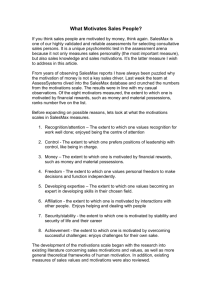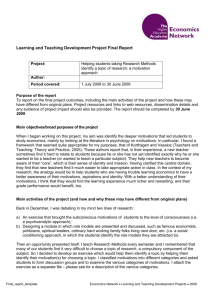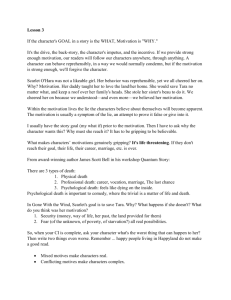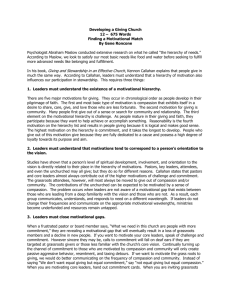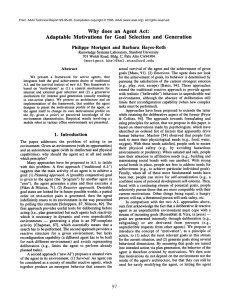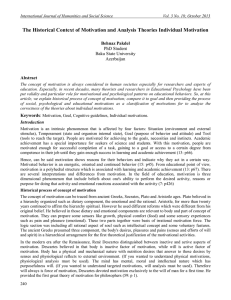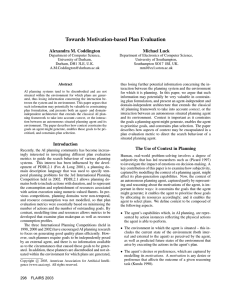Measuring Job Motivation article 2014
advertisement
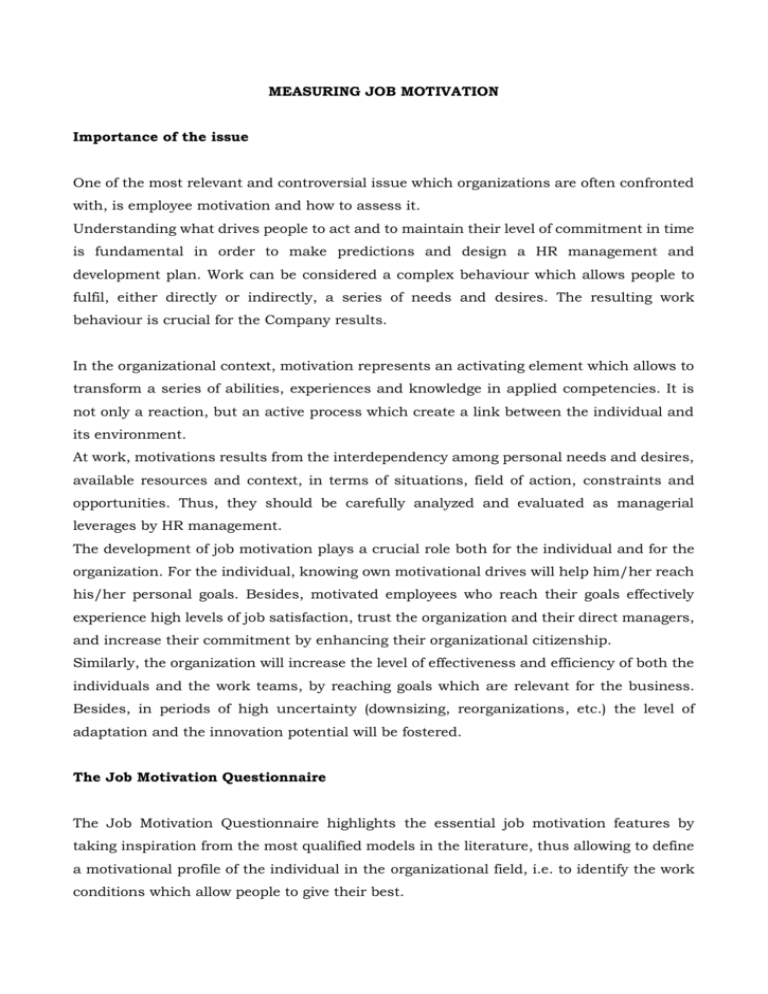
MEASURING JOB MOTIVATION Importance of the issue One of the most relevant and controversial issue which organizations are often confronted with, is employee motivation and how to assess it. Understanding what drives people to act and to maintain their level of commitment in time is fundamental in order to make predictions and design a HR management and development plan. Work can be considered a complex behaviour which allows people to fulfil, either directly or indirectly, a series of needs and desires. The resulting work behaviour is crucial for the Company results. In the organizational context, motivation represents an activating element which allows to transform a series of abilities, experiences and knowledge in applied competencies. It is not only a reaction, but an active process which create a link between the individual and its environment. At work, motivations results from the interdependency among personal needs and desires, available resources and context, in terms of situations, field of action, constraints and opportunities. Thus, they should be carefully analyzed and evaluated as managerial leverages by HR management. The development of job motivation plays a crucial role both for the individual and for the organization. For the individual, knowing own motivational drives will help him/her reach his/her personal goals. Besides, motivated employees who reach their goals effectively experience high levels of job satisfaction, trust the organization and their direct managers, and increase their commitment by enhancing their organizational citizenship. Similarly, the organization will increase the level of effectiveness and efficiency of both the individuals and the work teams, by reaching goals which are relevant for the business. Besides, in periods of high uncertainty (downsizing, reorganizations, etc.) the level of adaptation and the innovation potential will be fostered. The Job Motivation Questionnaire The Job Motivation Questionnaire highlights the essential job motivation features by taking inspiration from the most qualified models in the literature, thus allowing to define a motivational profile of the individual in the organizational field, i.e. to identify the work conditions which allow people to give their best. The questionnaire is made of several measure scales. Respondents are invited to express their main expectations concerning work and the areas of higher satisfaction in their activity. 18 job motivations are measured, like for example expectations about income, relationship with others, variety, career advancement. The score analysis may be conducted either manually or by computer. It allows to obtain an adequate representation of the respondents in terms of two important ways to relate to work. First, an individual profile describing the importance which the person gives to each of the 18 features is derived. Secondly, the strength of 6 core motivational drivers in each individual is measured: Security External recognition Personal fulfilment Relationships with others Autonomy Achievement The motivational picture obtained in this way is later compared to the elements of satisfaction present at work, thus deriving a matrix that shows which motivations are satisfied and which are not, in relation to their intensity. The questionnaire may be used with different goals: Individual Assessment: for selection, vocational guidance, development, counselling, coaching; Analysis of work teams: Functional and multicultural teams, for an assessment of their level of motivational and professional satisfaction; Analysis of plants / sites: it allows to find and compare possible differences among the workplaces; International comparisons: for the study of multiculturalism and for an assessment of the most peculiar national features. The questionnaire can be completed either on paper or online and it requires about 10 minutes. Results are shown in graphs which may be elaborated for either individual or group scores. Output example In the following graph, an example of output is presented, which shows the intensity of the job motivations of an individual and the degree to which they are satisfied in his/her current work environment. Four quadrants are derived, referring to, respectively: Strong motivations satisfied Strong motivations not satisfied Weak motivations satisfied Weak motivations not satisfied The conclusions suggested by the results, combined with other elements, may orient managerial decisions, like development plans, mobility, career advancements.

